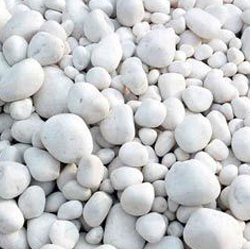Boggart Stones and Boggart Smells April 2, 2016
Author: Beach Combing | in : Modern , trackback
Joseph Wright has, in his Dialect Dictionary, this absolutely unexpected definition for ‘boggart stones’, something associated with Eastern Lancashire (the ‘e. Lan. 1’ in his reference is to a local word list from those parts, A Glossary with Rochdale and Rossendale Words, the relevant entry for which is put in a screen capture below).

Wright’s entry reads: [boggart] -stones, white quartz nodules found in gravel;… e.Lan.1 When rubbed together these are supposed to emit a brimstone-like odour.
It goes without saying that Wright was exhaustive. If he only refers to sulphorous stones for Rochdale and Rossendale this phrase was not extensively used.
What on earth does boggart stones mean? Boggart, of course, is a northern bogey, particularly associated with Lancashire. Elsewhere in the north-west, particularly in the South Pennines, ‘Boggart Stones’ refers to great boulders. But here there is a peculiarly local meaning for these strange sulphur pebbles.
That quartz pebbles can, if rubbed together, emit an odour is apparently fact. There are lots of modern geology and popular science sites that describe the mechanics behind this. But here is a more homely description from Conversations on Mineralogy (1822).
Mrs L:.. Those which emit any odour are, perhaps, no more numerous. Some minerals have a particularly disagreeable odour when rubbed. There is a kind of black limestone which, on account of this property, is called stink-stone. Others have a faintly sulphorous smell, which you may perceive by rubbing together two pieces of quartz.
Mary: I recollect rubbing together some white pebbles once in the dark, to see the light which was produced, and they smelt like sulphur.
Mrs. L.: They were quartz pepples [sic], and the light which you saw was phosphorescent.
So against the odds the references stands up, but why were these quartz pebbles ‘boggart stones’, as opposed to ‘stink stones’, ‘devil stones’ (there was brimstone…), ‘fairy stones’ or any other number of possibilities. Beach has not the slightest idea, but his bet would be that ‘boggart’ here, and there are some parallels in Lancashire dialect, did not refer to ‘boggart’ the monster, but ‘boggart’ meaning something like ‘bewitched’. Quartz stones that give off a smell of brimstone are exciting enough, but if they also glow in the dark, a fact Wright misses out on, Lancashire kids, in an age before Gameboys or, for that matter, Happy Days, could have spent hours and hours having fun off in the woods after sundown.
Other suggestions for boggart stones: drbeachcombing At yahoo DOT com
David O, 30 April 2016: These turn up on Scottish sites and I’ve been noticing references to them, lately. Very quick link-dump follows:
We’ve got Bronze Age examples, when they often crop up in cist burials:
Timeline of prehistoric Scotland
“2000 BC, Forteviot: A Bronze Age tomb with burial treasures including the remains of an Early Bronze Age ruler laid out on white quartz pebbles and birch bark”
“700-500 BC, Argyll, The “Ballachulish Goddess” – a life-sized female figure in oak with quartz pebbles for eyes”
They were sometimes painted:
Painting the stones black: solving the mystery of painted quartz pebbles
They survive into the early Christian period, where they turn up at churches:
And maybe even into the early modern period:
White Quartz in Irish Traditions
“Even Mary, Queen of Scots, seems to have been a believer in the stones’ curative powers, apparently bequeathing in her final will to her beloved brother-in-law, Henry III of France, ‘two rare stones, valuable for the health.'”
And beyond:
Holy Wells in Wales and Early Christian Archaeology
“In the 1930s Alwyn D. Rees excavated Ffynnon Degla, Llandegla (Denbighshire). Underlying mud and stones containing early nineteenth century coins, he uncovered a layer of white quartz and calcite pebbles. But unfortunately there was no dating evidence for these, and, although it is known that white quartz has been collected since prehistoric times because of its striking appearance, and that in the early medieval period white pebbles were sometimes associated with water and healing, they were also being thrown into holy wells to obtain a cure as late as the eighteenth century”
As we move forward in time, they seem to be more clearly associated with healing. How does that gel with them being “Boggart stones” and “sulphurous”? A completely separate tradition, maybe?
Ruth B: Just wanted to let you know I finally found some quartz pebbles, without resorting to digging out my collection and harder than you might think in this area even though we have granite intercut with quartz everywhere, and tried striking them together. There was a distinct sulpherousy type smell, though not terribly strong, but I couldn’t see any sparks or luminescence. I will try a few more times and report if anything happens. I was assuming from the article that it referred to plain white quartz, not any of the many other varieties. Hmmmm, now I may have to dig out the beach collection and see if something happens. Enquiring Minds Want To Know–


